Historical incidence of the larger land mammals in the broader Western and Northern Cape provinces. 2011. Author: CJ Skead; editors: A Boshoff, G Kerley and P Lloyd. Port Elizabeth: Centre for African Conservation Ecology, Nelson Mandela Metropolitan University.
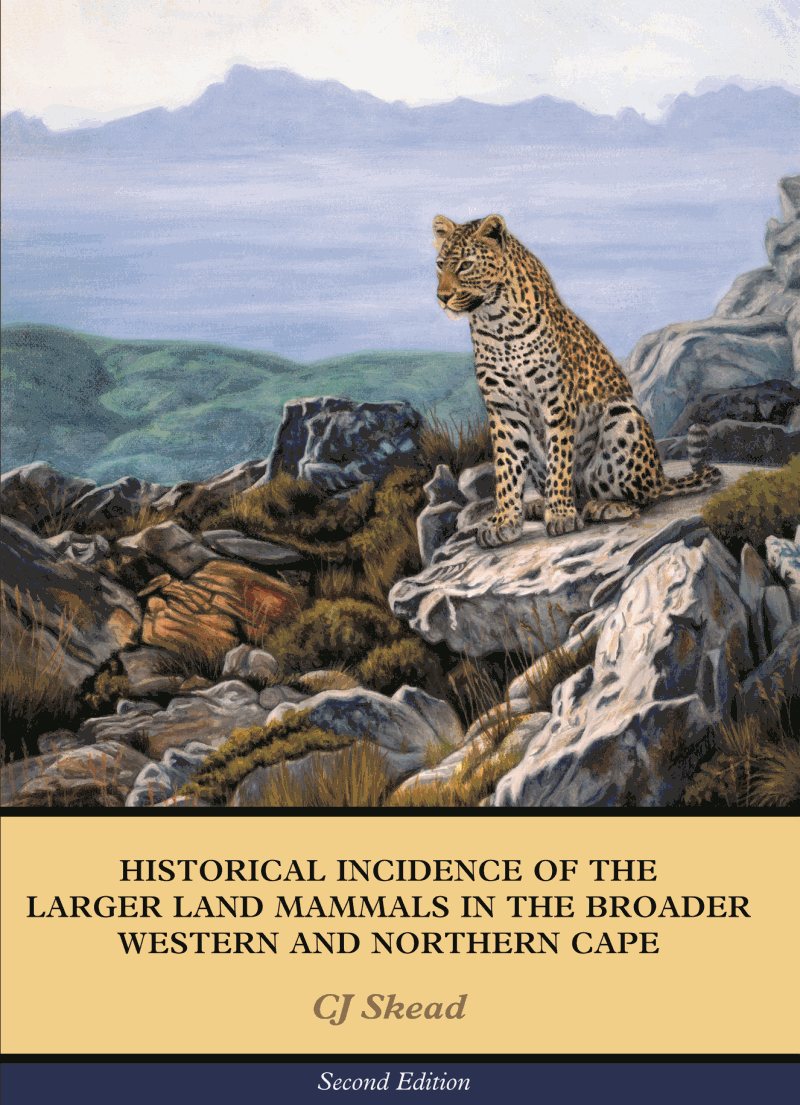
About the book
Chapter 1 includes background information pertaining to the book and the subject matter that it addresses. The geographical area covered by the book is briefly described, especially with regard to political boundaries, climate, terrain, and biomes and vegetation. A section on nomenclature, which gives details of taxonomic conventions and common names used, is followed by notes on idiosyncrasies in the colloquial names of some South African mammals.
Chapter 2 contains a brief review of the mammal position when the first European visitors and settlers arrived at the Cape. The written record started in the latter 1400s and continued intermittently until Jan van Riebeeck established a permanent settlement at the Cape in 1652, whereafter the number of records steadily increased.
Chapter 3 provides a description of the nature of the veld in the broader Western and Northern Cape provinces, based on the contents of the diaries and journals of early European travellers and settlers.
Chapter 4, which forms the main part of the book, presents a fully revised account of the known historical distribution records for a wide range of mammal species, usually according to a number of defined geographical regions, within the overall area covered by the book. The majority of the records relate to the larger species, and particularly those which were relatively easily identified and seen by the early observers. Many of the records are critically evaluated for their reliability. Maps showing the distribution of the historical records are presented for 44 species, and for these species and certain others an ‘Overview’ (summary) of their historical distribution is provided.
Chapter 5, which is a new addition to the book, provides a review of the patterns and trends in the status of the larger mammals. More specifically, it identifies those species that went extinct, or that were exterminated from, the area covered by the book. It mentions (exterminated) species that have since been re-introduced to this area, and it incorporates comments on the dynamic status of those species that were not exterminated. The impact of humans on the larger mammals is briefly reviewed.
Chapter 6, which is a new addition to the book, lists and provides comments on larger mammal species that have been introduced in the area covered by the book, or into parts of it. ‘Introduced’ refers to species that are non-indigenous. Importantly, it provides information and discussion on the known and potential ecological consequences or impacts of introduced species.
The area covered by the book
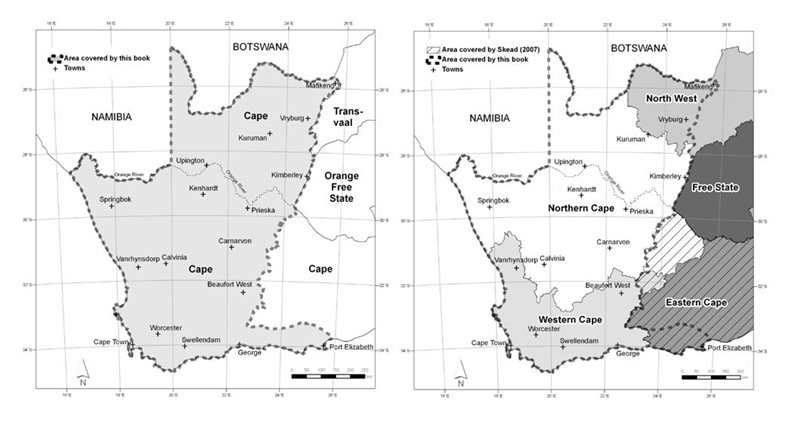 The area covered by the book encompasses the Western and Northern Cape provinces as they were prior to the redefinition of the provincial boundaries of South Africa following the first democratic election in 1994. Hence the inclusion or exclusion of parts of today's (2013) Noerth West and Eastern Cape provinces. The Humansdorp, Port Elizabeth and Uitenhage districts are included in order to achieve complete coverage of the Cape Floristic Region (Fynbos Biome).
The area covered by the book encompasses the Western and Northern Cape provinces as they were prior to the redefinition of the provincial boundaries of South Africa following the first democratic election in 1994. Hence the inclusion or exclusion of parts of today's (2013) Noerth West and Eastern Cape provinces. The Humansdorp, Port Elizabeth and Uitenhage districts are included in order to achieve complete coverage of the Cape Floristic Region (Fynbos Biome).
List of contents
Chapter 1
Introduction
1.1 Background and the area covered by the book
1.2 Climate and biophysical features
1.2.1 Climate
1.2.2 Biophysical features
1.2.3 General
1.3 Taxonomy and nomenclature
1.3.1 Taxonomy and common names
1.3.2 Idiosyncrasies in the colloquial nomenclature
1.4 Species first described in the area covered by the book
Chapter 2
Historical review: a short appraisal of the mammal position when the first Europeans arrived at the Cape
Chapter 3
Historical review: the nature of the veld
3.1 General
3.2 The Cape Peninsula
3.3 Cape Flats to the Great Berg River
3.4 Piketberg and Clanwilliam districts
3.5 Vanrhynsdorp district
3.6 Namaqualand
3.7 Southern Namibia
3.8 Bushmanland and the Karoo regions
3.9 Southern parts of the Great Karoo
3.10 Area north of the Orange River
3.11 South-western Cape
3.12 Mossel Bay to Plettenberg Bay
3.13 Tsitsikamma
3.14 The valleys behind the first chain of mountains
3.15 Gamtoos River to the Port Elizabeth area
Chapter 4
Historical review: species’ occurrence and status
4.1 Introduction
4.2 Species’ accounts
Cape golden mole (kruipmol)
Elephant-shrews
Antbear (ant-eater, aardvark)
Rock hyrax (dassie, klipdassie)
Tree hyrax (boomdassie)
African elephant (olifant)
Cape hare (vlakhaas) and Scrub hare (kolhaas)
Smith’s red rock rabbit? (kliphaas)
Cape dune mole-rat and Namaqua dune mole-rat
Cape mole-rat (Kaapse-blesmol)
Porcupine (ystervark)
Springhare (springhaas)
South African ground squirrel (waaierstertgrondeekhoring)
Rats and mice (rotte en muise)
Chacma baboon (bobbejaan)
Vervet monkey (blouaap)
Bats (vlermuise)
Ground pangolin (ietermagog)
Aardwolf (maanhaarjakkals)
Brown hyaena (bruinhiëna)
Spotted hyaena (gevlekte hiëna)
Hyaena: species indet.
Cheetah (jagluiperd)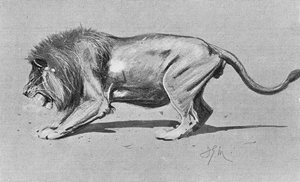
Leopard (luiperd)
Lion (leeu)
Caracal (lynx, rooikat)
Black-footed cat (miershooptier)
Serval (tierboskat)
Cats: species indet.
The genets (muskejaatkatte)
The mongooses (muishonde)
Suricate (stokstertmeerkat)
Yellow mongoose (geelmuishond)
Large grey mongoose (grootgrysmuishond)
Slender mongoose (swartkwasmuishond)
Marsh (water) mongoose (kommetjiegatmuishond)
Mongooses indet.
Bat-eared fox (bakoorjakkals)
African wild dog (wildehond)
Cape fox (silwerjakkals)
Black-backed jackal (rooijakkals)
Otters: general
African (Cape) clawless otter (groototter)
Honey badger (ratel)
Striped polecat (stinkmuishond)
White rhinoceros (witrenoster)
Black rhinoceros (swartrenoster)
Rhinoceros: species indet.
True quagga (quagga) or mountain zebra (bergsebra)
Burchell’s (plains) zebra (bontsebra)
Bushpig and warthog: general
Bushpig (bosvark)
Cape warthog (‘vlakvark’)
Hippopotamus (seekoei)
Giraffe (kameelperd)
African buffalo (buffel)
Greater kudu (koedoe)
Bushbuck (bosbok)
Eland
Black wildebeest (swartwildebees)
Blue wildebeest (blouwildebees)
Red hartebeest (rooihartbees)
Bontebok
Blesbok
Tsessebe (basterhartbees)
Roan (bastergemsbok)
Blue antelope (bloubok)
Gemsbok
Blue duiker (blouduiker)
Common duiker (gewone duiker)
Southern reedbuck (rietbok)
Mountain reedbuck (rooiribbok)
Grey rhebok (vaalribbok)
Springbok
Oribi (oorbietjie)
Steenbok
Cape grysbok (grysbok)
Impala (rooibok)
Klipspringer
4.3 Using historical records to estimate the potential distribution of the larger mammals in the Cape Floristic Region (Fynbos Biome)
Chapter 5
Man’s influence on the incidence of the larger mammals
5.1 Utilisation and persecution
5.1.1 The pre-historical period
5.1.2 The colonial period
5.1.3 Wild carnivores and livestock
5.1.4 The demise of the ungulates
5.1.5 Loss of habitat
5.2 Extinction, extermination and survival
5.2.1 Introduction
5.2.2 Patterns and trends
5.2.3 The hand of man: overview of changes in mammal status
Chapter 6
Introduced (non-indigenous) species
6.1 Introduction
6.2 Introductions from Eurasia and North America
6.3 Introductions from elsewhere within Africa
6.4 Introductions from within the area covered by the book
6.5 Impacts of introduced species
6.6 Concluding remarks
Acknowledgements
Bibliography
Index
Description of the book
This A4-size, hardcover, book contains 533 pages of black and white text, tables, maps and numerous illustrations. It has a full-colour dust cover and gold-foiled title on the hardcover.
Sponsors
The production of this book was sponsored by the following:
|

HANS HOHEISEN
CHARITABLE TRUST
|
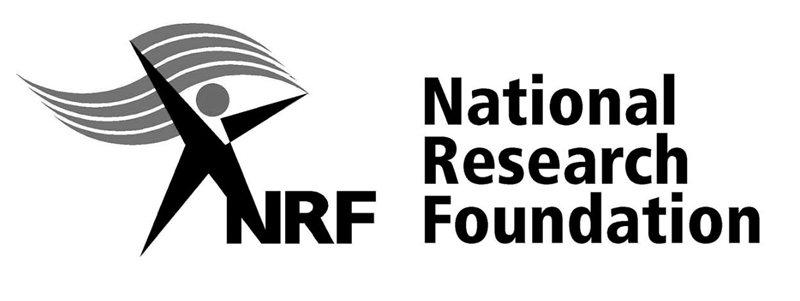 |
|

Rupert Nature Foundation
|
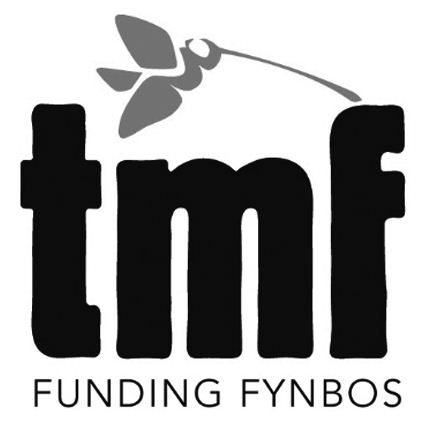 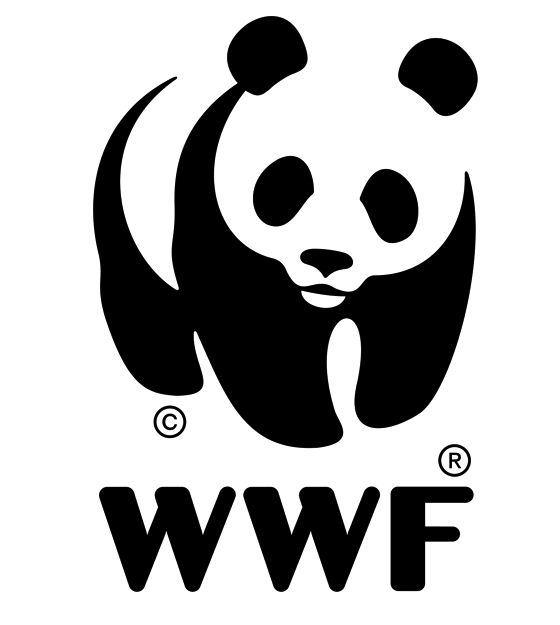 |
 |
 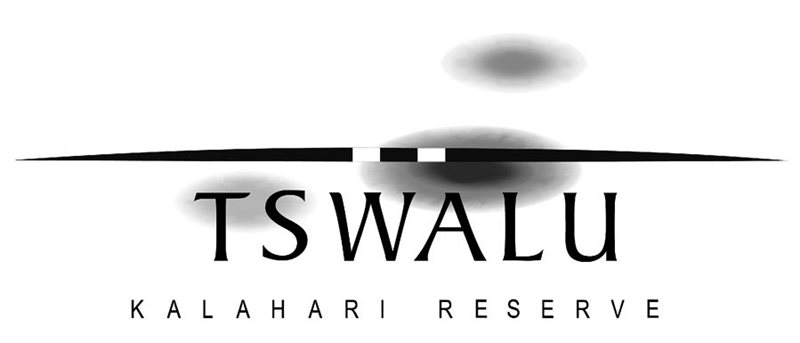 |
|

|
Mrs June Stannard |
How to obtain a copy
Return to the main menu
Historical incidence of the larger land mammals in the broader Eastern Cape (2007).
Historical incidence of the larger mammals in the Free State Province (South Africa) and Lesotho (2013).